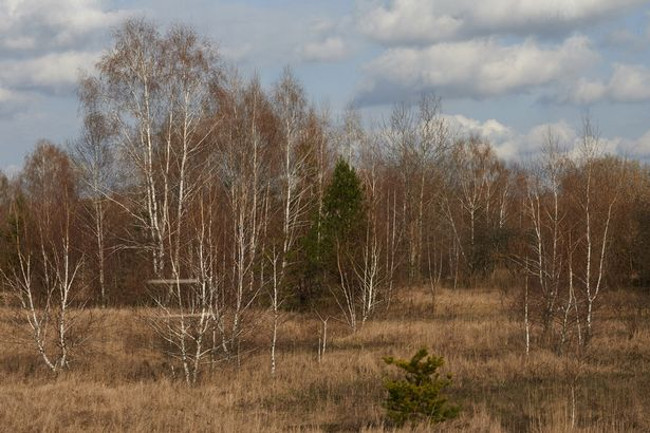Will disaster happen when the leaves in Chernobyl area do not decompose?
The explosion of the Chernobyl nuclear power plant has passed 30 years, but the consequences of the explosion left are still worrisome for people. One of the environmental problems warned by scientists since 1992 is that the leaves in Chernobyl area are not biodegradable. This may soon become a disaster because of the drier summers due to the effects of climate change.

On April 26, 1986 Chernobyl nuclear power plant in Pripyat, Ukraine (then a part of the Soviet Union) exploded. This is the most serious nuclear accident in the history of nuclear energy.
The forests around the Chernobyl nuclear power plant are not completely decomposed. The hot summer sun makes this forest very susceptible to fire and if that happens, a nuclear forest fire will make Ukraine a headache. Radioactivity will spread beyond the quarantine of Chernobyl, an area of 2,600 square kilometers, just 110 km north of Kiev.
This quarantine area was visited by many scientists, where there were almost no insects, the individual birds grew abnormally like deformed mines, strangely long tail feathers and smaller brains. Trees also become more dense. They found that there were many points on the trees here, specifically they described as " significant waste accumulation over time " in a study published in the journal Oecologia. Mentioning "significant" means that scientists are referring to non-biodegradable plants, as do fallen leaves on the ground.

The Red Forest , the forest around Chernobyl, was exposed to the highest level of radiation from the explosion of a nuclear power plant that died and turned ginger. In an interview with Smithsonian magazine, Timothy Mousseau - biologist at the University of South Carolina and principal author of the study - said that these plants "are" very impressive ", while in the The forest where I live, the tree almost becomes sawdust after a decade on the ground. "
The forest remains undamaged due to bacteria, bacteria, fungi, worms, insects and other organisms that are capable of decomposing almost nonexistent in this area . Mousseau and his team discovered this after doing an experiment to leave 600 leaf bags around Chernobyl in 2007.
A year later, they collected the leaf bags and found that the leaf-filled bags placed in areas without radioactivity decomposed 70-90%, but the leaves in the radioactive area decomposed only about 40 % " We are concerned that there may be a forest fire in the coming years , " Mousseau told Smithsonian.
Extremely necessary decomposition for plants to grow, because this process helps bring nutrients back into the soil. Difficulty in decomposing can also explain why the living trees around Chernobyl grow very slowly. They have absorbed radioactive substances such as strontium 90 isotopes (which cause bone cancer) and cesium 137 (causing nausea and can lead to death) for nearly three decades.
If these plants are burned, radioactive molecules will be released into the atmosphere and " people will be able to breathe them " Scientific American (SA) reported last year based on a yearly study. 2011. But besides, the most dangerous is that food consumed daily like milk and meat will also be contaminated with radioactive substances.
To prevent forest fires, firefighters were ordered to stand in isolation, but that was not enough. They are not professionally trained, are not equipped with protective clothing or poison masks. This is extremely dangerous because this is not an ordinary forest fire.
You should read it
- Iranian Siemens continued to sabotage the nuclear plant
- What is left of the Earth after 100 nuclear warheads are detonated at the same time?
- Experience the destructive power of a nuclear bomb when it explodes right next to you
- Scientists have 'thrown' the atomic bomb into beer, soda and drank them
- Chernobyl burns big, the radiation level in the area is 16 times higher than normal
- Interesting finding: Forest trees have thicker shells where fire often occurs
 Hate to make a strange snake lizard-like creature
Hate to make a strange snake lizard-like creature What ancient monsters can kill Megalodon super shark?
What ancient monsters can kill Megalodon super shark? The slug race - the strange slow-motion race in human history
The slug race - the strange slow-motion race in human history Jade snake snake - Beauty queen snake in Vietnam
Jade snake snake - Beauty queen snake in Vietnam The number of honey bees in the world decreased by nearly 12%
The number of honey bees in the world decreased by nearly 12% Strangely, moths of brilliant colors are extremely similar to stuffed animals
Strangely, moths of brilliant colors are extremely similar to stuffed animals